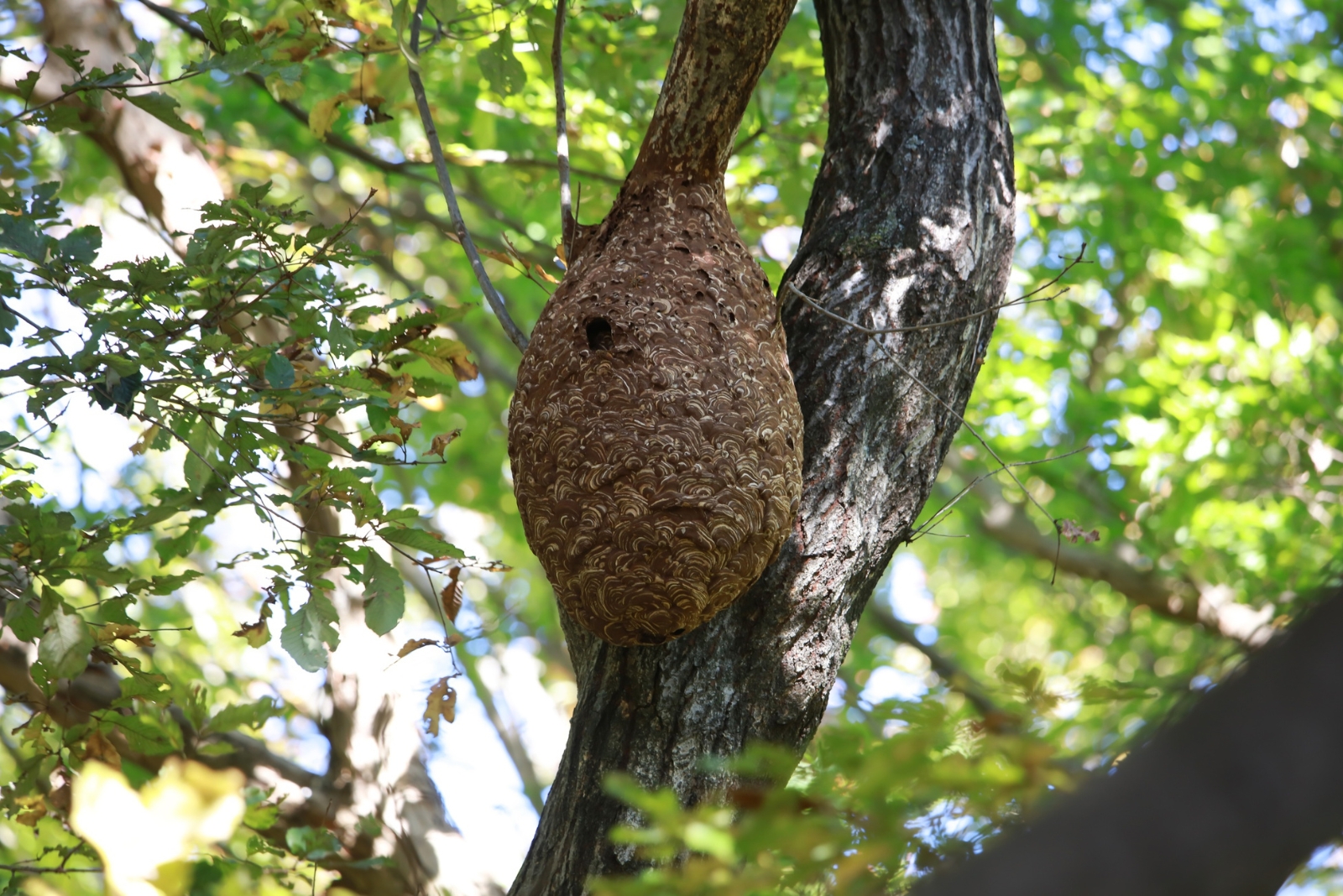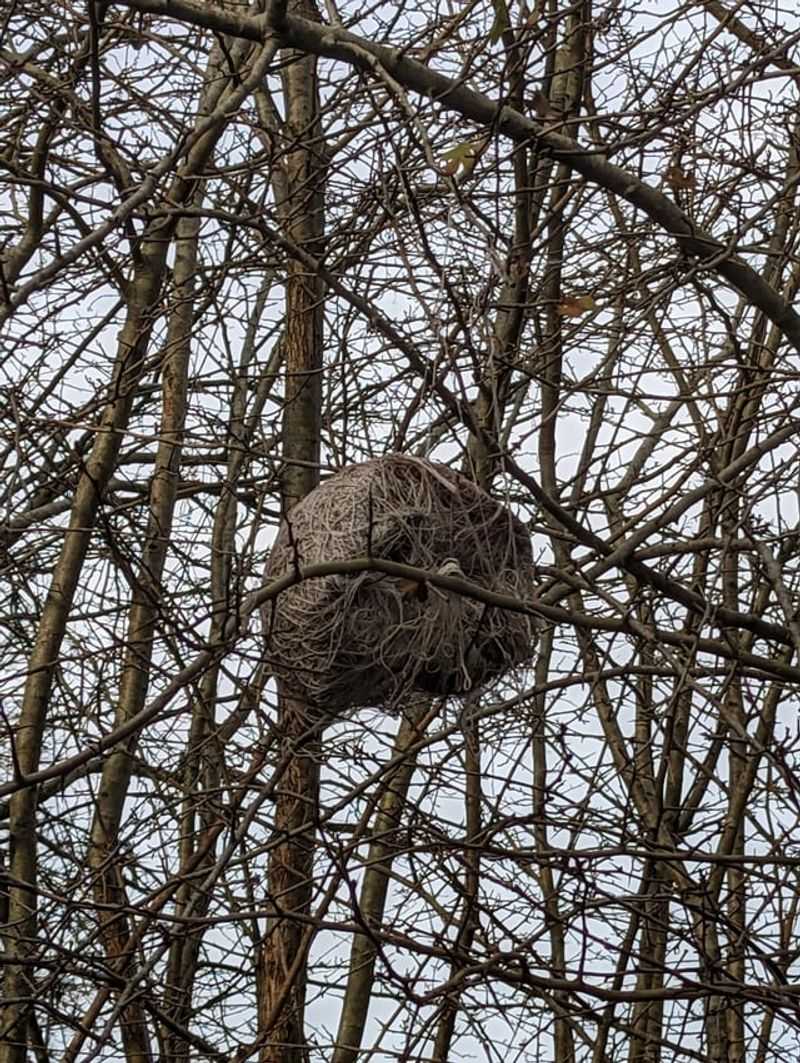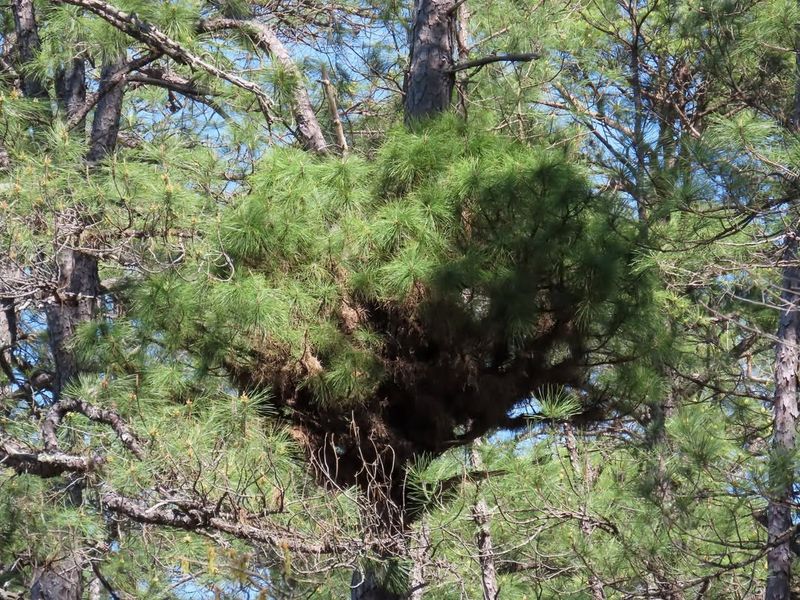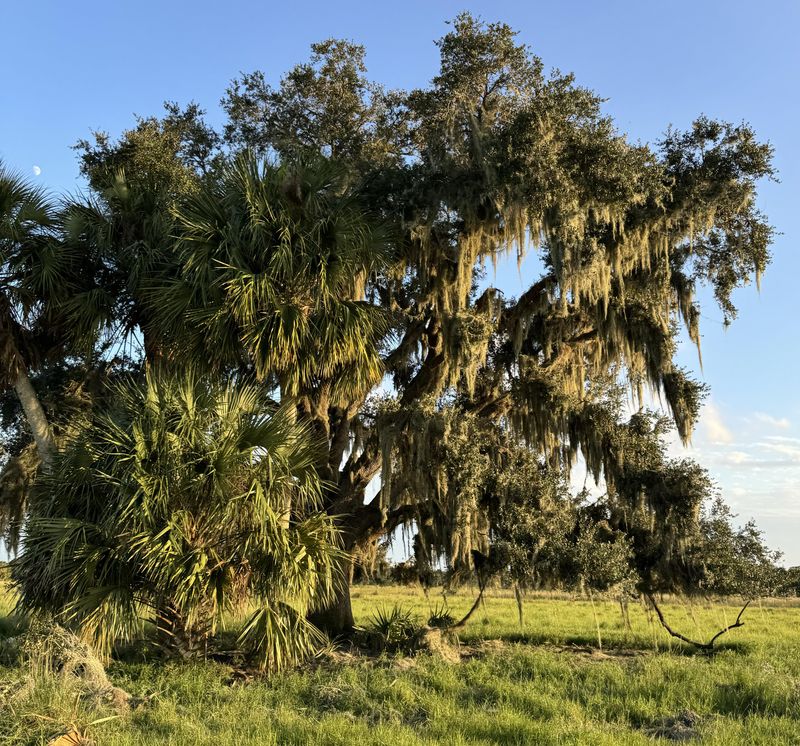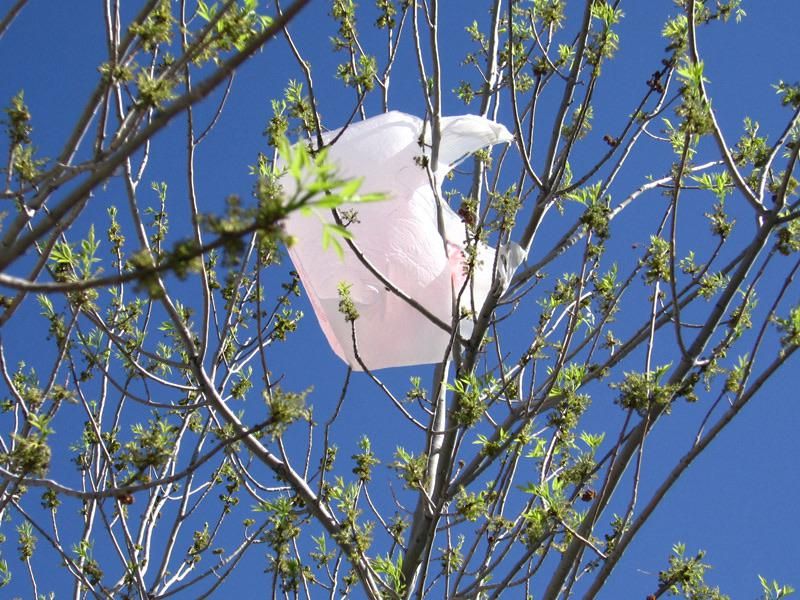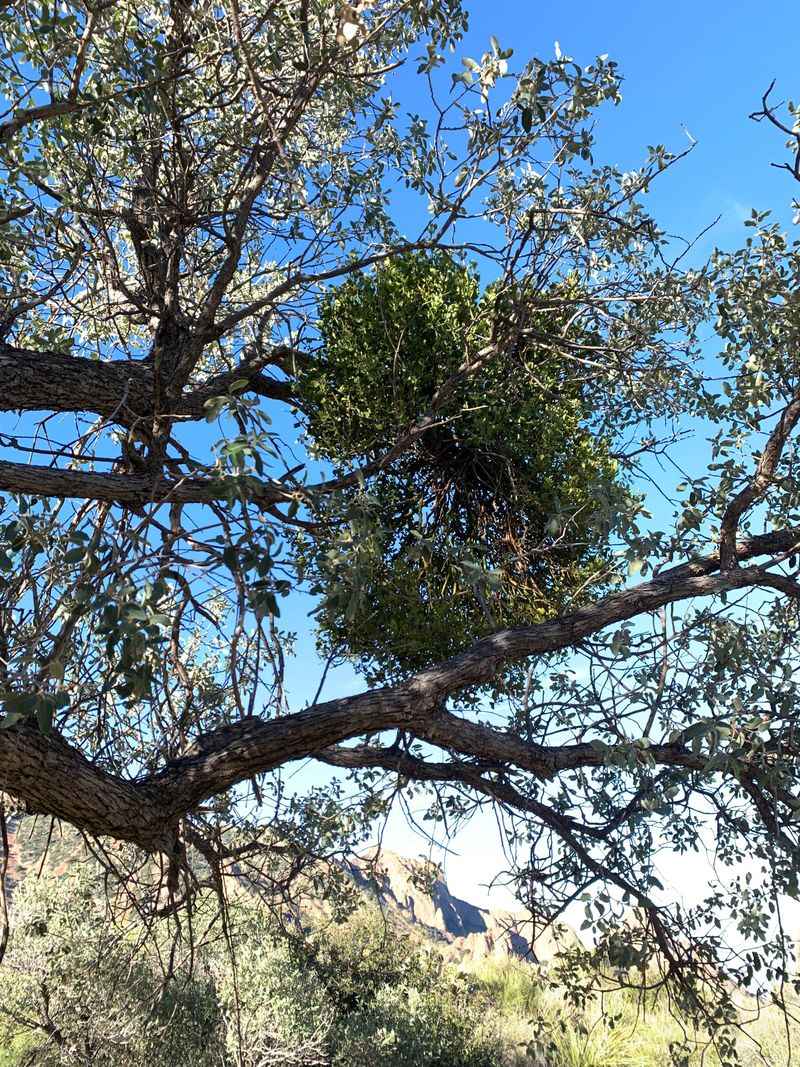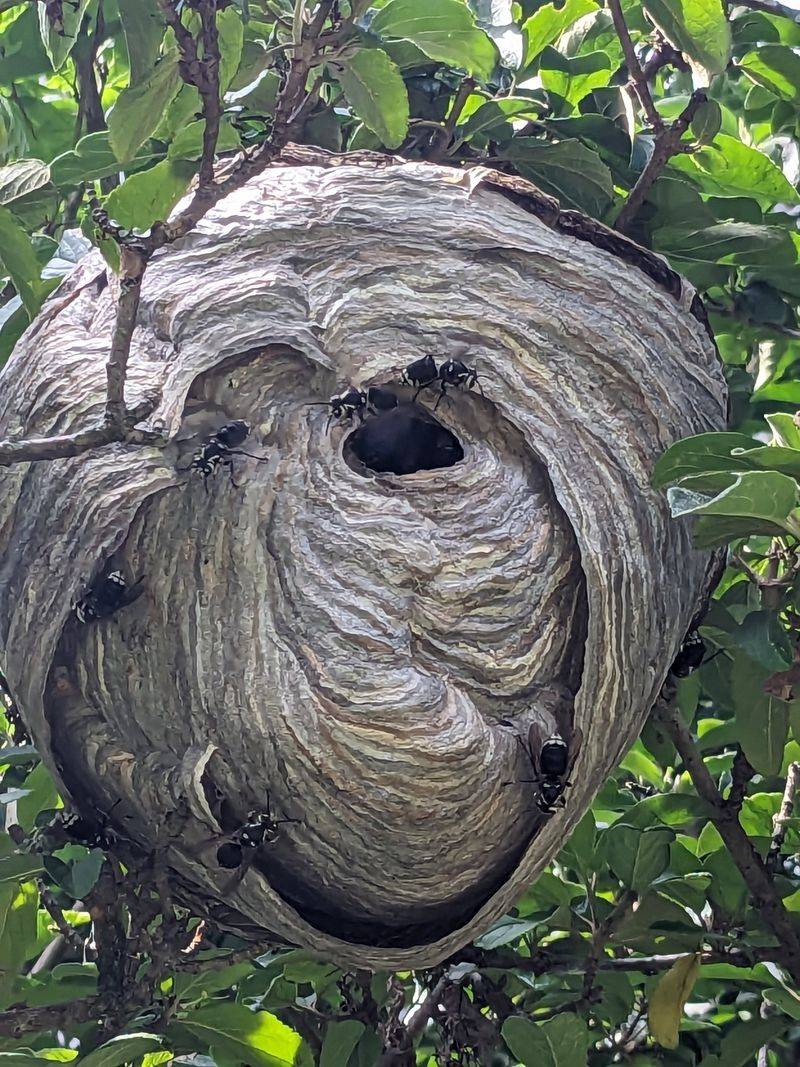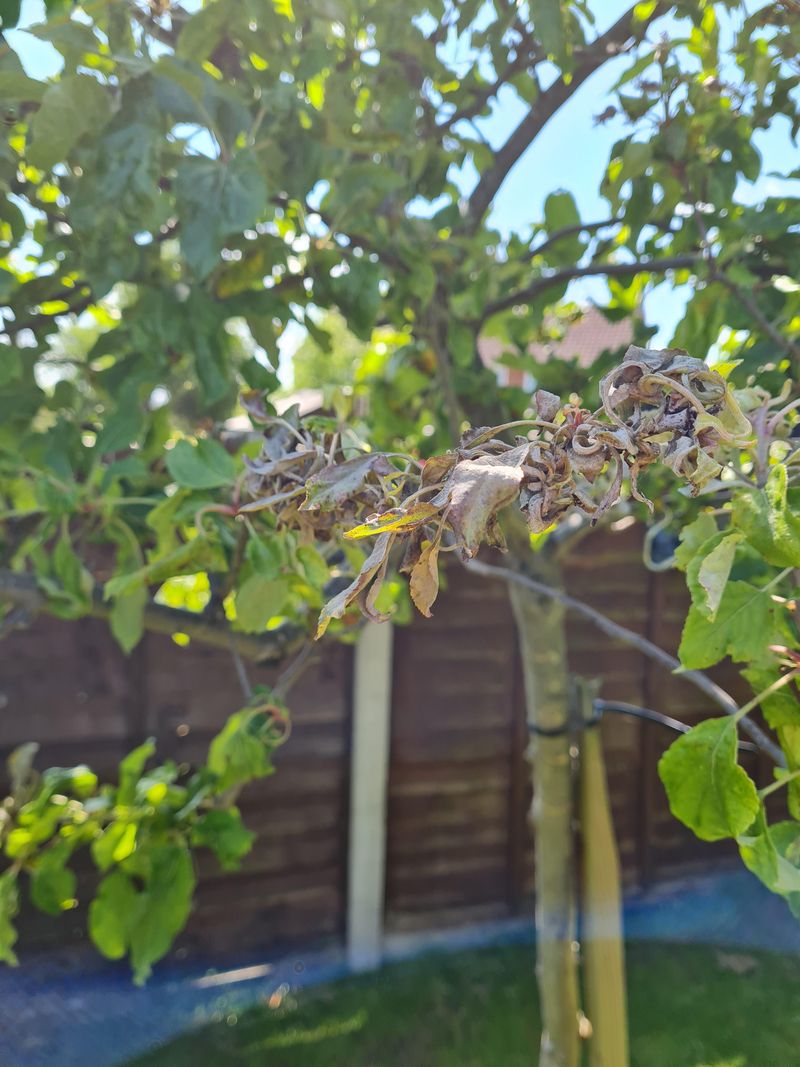I once spotted what I thought was a nest in an Alabama tree, but it turned out to be something totally different. Nature loves little tricks like this that make you pause and observe.
Identifying the difference keeps both curiosity and caution in balance. Your backyard can be full of surprises once you know what to look for.
1. Squirrel Dreys
Squirrels build elaborate homes called dreys that often get confused with bird nests throughout Alabama. Ball-shaped and constructed from leaves, twigs, and moss, these structures sit wedged in tree forks or against trunks.
Unlike most bird nests, dreys are much larger and bulkier, sometimes reaching the size of a basketball. Gray squirrels especially love building multiple dreys across their territory.
If you see movement or a bushy tail poking out, you’ve definitely found a squirrel home rather than a bird nest.
2. Witches’ Broom Growth
Sometimes Alabama trees develop strange clusters of branches that look remarkably nest-like from a distance. Called witches’ brooms, these growths happen when fungi, mites, or diseases cause abnormal branching patterns.
The tangled mass of small twigs creates a dense, rounded shape that fools many people. Oaks, hickories, and pines across Alabama commonly develop these formations.
Unlike actual nests, witches’ brooms stay attached year-round and grow directly from the branch rather than sitting on top of it.
3. Clumps of Spanish Moss
Spanish moss drapes beautifully across Alabama trees, especially in the southern parts of the state. When wind bunches it together or it accumulates in branch forks, it creates convincing nest-like clumps.
This silvery-green plant isn’t actually moss at all but an air plant related to pineapples. Birds sometimes use it as nesting material, adding to the confusion.
The wispy, hair-like strands distinguish Spanish moss from actual nests, though thick accumulations can really trick your eyes at first glance.
4. Plastic Bags and Trash
Unfortunately, windblown plastic bags frequently get snagged in Alabama trees and create surprisingly realistic fake nests. White or light-colored bags especially mimic the pale appearance of certain bird nests when viewed from below.
Strong storms can wedge these bags deep into branches where they stay for months. The billowing material catches more debris over time, making the illusion even more convincing.
Always check carefully before assuming you’ve spotted wildlife housing—it might just be litter needing removal.
5. Mistletoe Clusters
Mistletoe grows as a parasite on many Alabama trees, forming rounded green clusters that people frequently mistake for nests. Oak trees particularly attract this plant, which creates dense, bushy clumps throughout the canopy.
During winter when leaves fall, these evergreen clusters become especially visible and nest-like. The plant sends roots into the tree branch to steal water and nutrients.
You’ll notice mistletoe stays green year-round, whereas real nests show brown twigs and grasses without the vibrant foliage.
6. Abandoned Hornets’ Nests
Bald-faced hornets build impressive paper nests in Alabama trees that often get mistaken for bird homes. These gray, football-shaped structures hang from branches and can grow quite large by late summer.
Made from chewed wood fibers mixed with saliva, the papery exterior has distinctive layers and swirls. Most hornets abandon these nests in winter, leaving them harmless but still attached.
The smooth, gray paper texture sets them apart from the rough twigs and grass of bird nests once you look closely.
7. Leaf and Debris Accumulation
Wind naturally pushes leaves, pine needles, and small twigs into the crooks of Alabama tree branches. Over time, these materials pile up and compact into shapes that strongly resemble deliberately built nests.
After storms, you’ll notice even more debris gets wedged into these spots. The random accumulation can look remarkably organized from ground level, especially in trees with multiple branching points.
Real nests show woven patterns and intentional construction, while debris piles appear more haphazard when examined up close.

